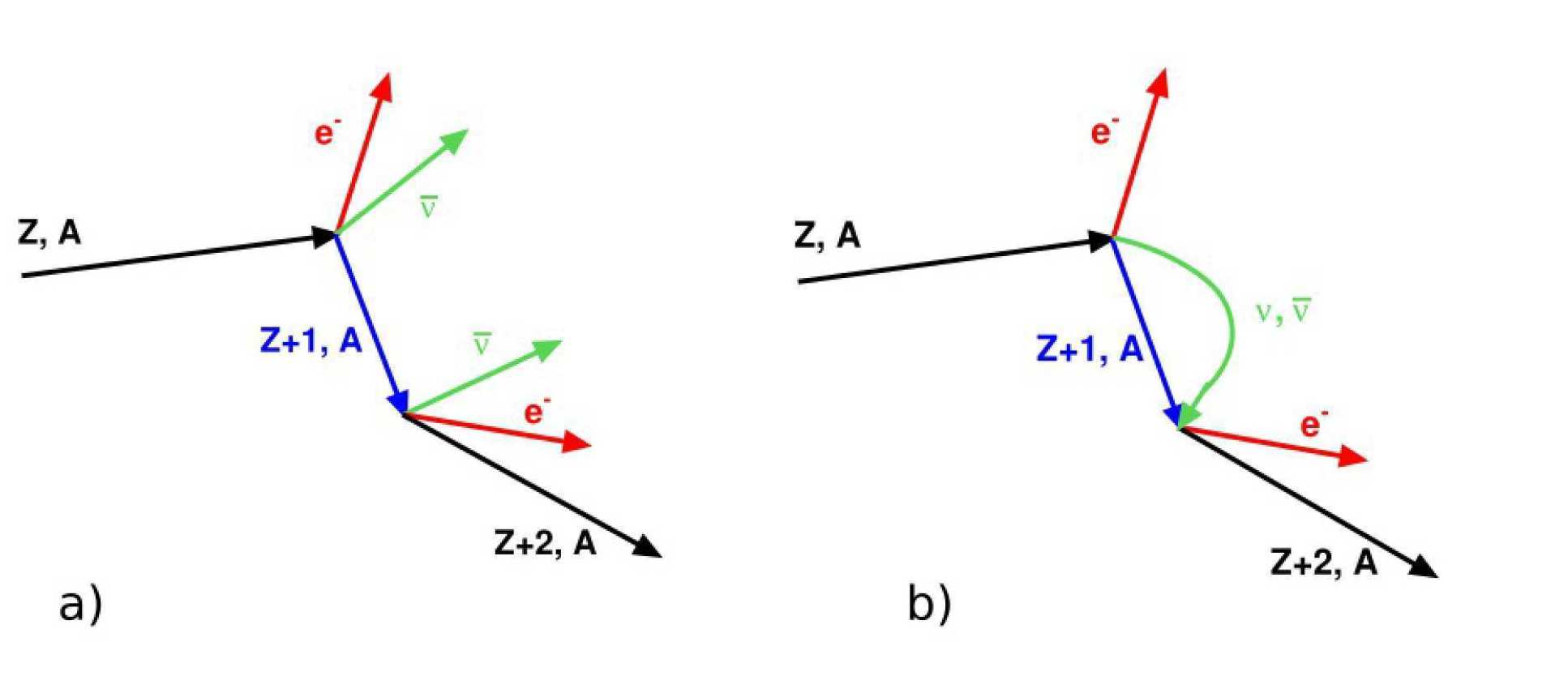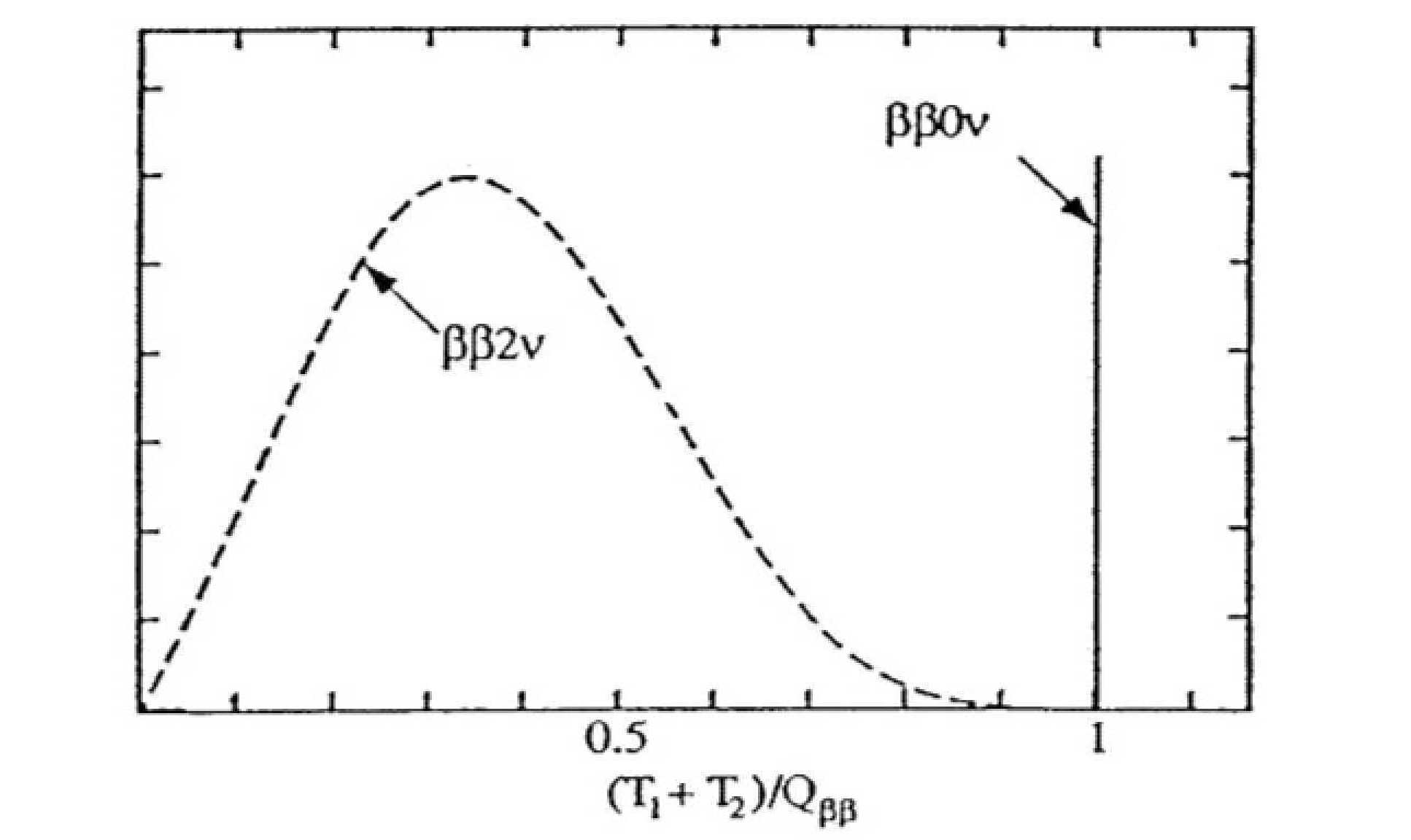Double beta decay
The observation of neutrino oscillations has demonstrated that neutrinos have mass. A consequence of this new, beyond the Standard Model physics is renewed interest in DBD experiments which provide the best way to determine the fundamental nature of the neutrino (Dirac or Majorana). In addition, DBD experiments offer the possibility of determination of the absolute neutrino mass scale and verification of the mass hierarchy of neutrinos (electron-neutrino, muon-neutrino, tau-neutrino).
DBD is a second-order weak process in which two neutrons inside a nucleus spontaneously transform into two protons. To conserve charge two electrons must be emitted. If lepton number is also to be conserved two antineutrinos must be emitted as well. This lepton-number conserving process, 2-neutrino DBD decay (fig.1a), has been observed in several nuclei (e.g. 76Ge → 76Se + 2e- + 2 neutrinos with a measured half life of ~1021 years). However, lepton-number is not associated with a gauge symmetry and hence need not be universally conserved. If lepton-number is violated neutrinoless DBD (fig.1b) may occur. In this case the neutrino is reabsorbed by the intermediate nucleus. This reabsorption requires that the neutrino is its own antiparticle (a Majorana fermion) and is not in a pure helicity state (i.e. must have non-zero mass).

The Majorana hypothesis is currently favoured in GUT (Grand Unified Theories) and supersymmetric theories. Neutrinoless DBD can be recognized by its electron-sum energy spectrum. The nuclear recoil energy is negligible and hence the sum of the electron energies is just the decay Q value smeared by the detector resolution (see fig.2).

If neutrinoless DBD exists it will be an extremely rare decay and so to observe it will require a large source mass (of enriched isotope), a highly efficient detector with good energy resolution and very low (nearly zero) backgrounds.


